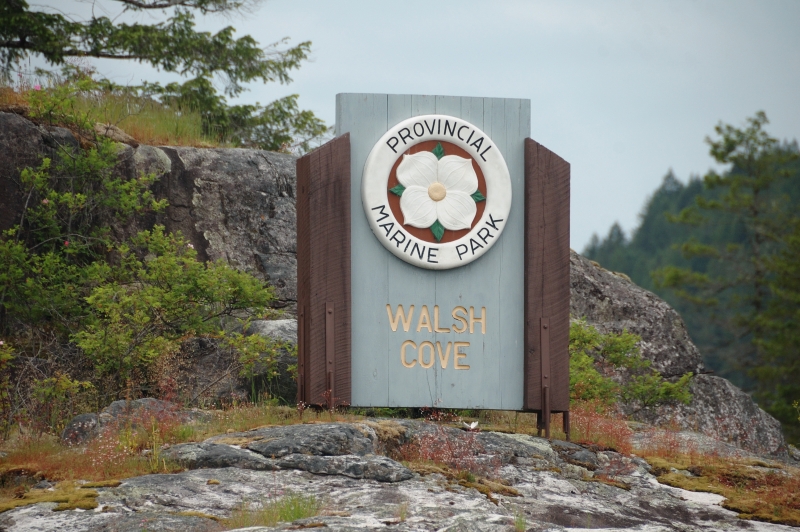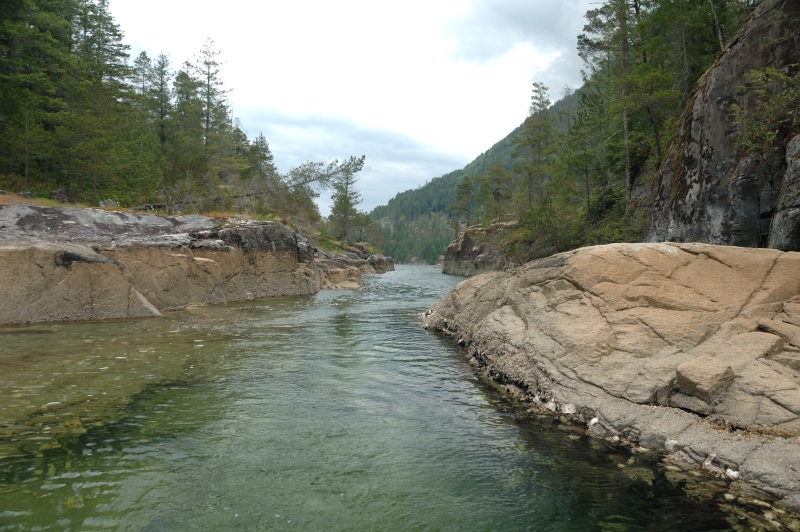Walsh Cove Marine Park
16th July 2023
Walsh Cove is one of the many marine parks that British Columbia has to offer. The park can be found north of Desolation Sound on the northeast end of West Redonda Island about one nautical mile from the northern end of Waddington Channel. Established in 1989 and has a total of 39 hectares of upland and 46 hectares of foreshore.

Being a marine park hasn’t taken away the beauty, mystery, and spiritual aspects that Walsh Cove has to offer. Numerous boaters frequent this cove annually to enjoy the tranquility and unspoiled atmosphere. This marine park has many unique features in store for those that venture into the remote anchorage.

The best entrance into the steep-sided anchorage is from the south. Some cruising guides state it can be made via the north through False Pass but only at low water when the rocks are exposed. The name False Pass might provide a clue as to the wisdom of this choice.

Walsh Cove consists of several small finger long islands, known as Gorges Island. This small island group shelters the anchorage from waves of the boat traffic transiting up and down Waddington Channel. Behind these islands you’ll find enough anchorage space for 15 to 20 boats.
Anchoring in this bit of paradise can be a bit tricky. The center of the cove is 50-feet deep and exposed to the southeast. The anchoring is over mud and rock and is best near the western shore with a stern-tie to shore.
Dropping a prawn pot or two, when in season, in Waddington Channel can pay dividends.
For the oyster lovers it is no surprise to find them abundant in this marine park. If you have a passion for oysters, suggest harvesting them from the outside of the finger island where they get a good flush from the currents running up and down Waddington Channel.

Walsh Cove has been a popular place for centuries. At the northern entrance to the cove, several different pictographs can be discovered. Beach the dinghy or kayak and scramble your way over the rocks to spot additional red figures. The artwork most likely was left by one of the coast Salish bands of the first nation. The ancient artist left images of fish, people, and numerous other symbols on the rock cliffs. Also, along the shoreline you can find soot cover overhangs as well as some midden. These overhangs might have offered protection from harsh rains and winds that this area is known to receive.
Pictographs are often found on light coloured rock bluffs throughout the area, and they are protected by British Columbia’s Heritage Conservation Act, which prohibits damage to the site or removal of material that constitutes part of the site. Cruising anthropologists are asked not to touch the pictographs as the oil from your hands can accelerate deterioration—please be respectful of this.

Capturing a quality photograph of a pictograph can be a challenge. Sometimes it is difficult to get just the proper angle, and often an adjustment in exposure is required. The use of a flash may help eliminate any shadows that may be cast over the subject. Because pictographs are usually located on a light-coloured rock, the best time to capture a photo is when the sun is not shining directly on it. Photo editing software can be used to enhance the picture by infusing additional red, making images and symbols pop out.
Keep in mind that Walsh Cove Park has no facilities as visitors are requested to practice “leave no trace” boating practices.
(Deane Hislop in partnership with Freedom Marine)


